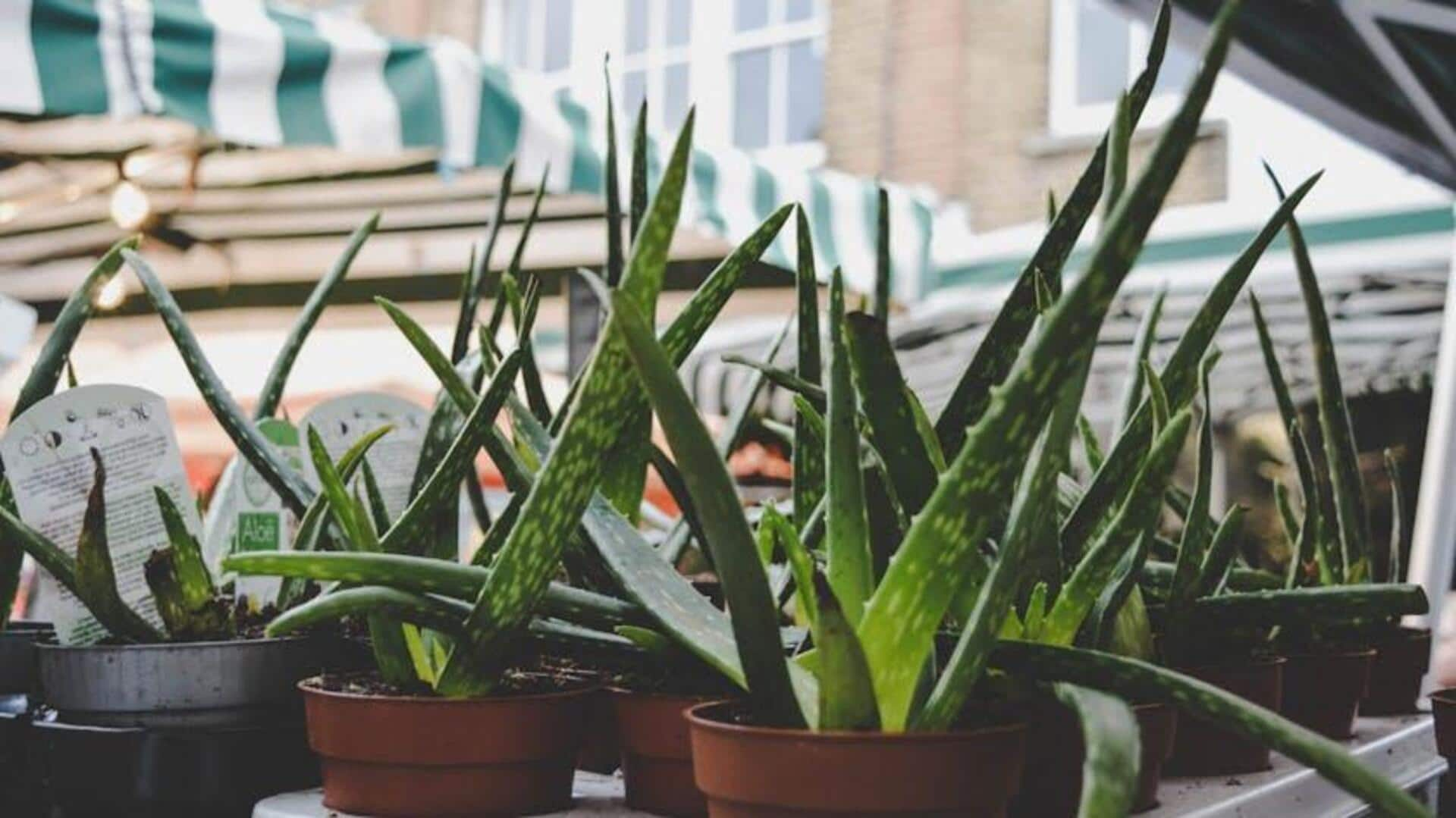
How to grow aloe vera at home
What's the story
Growing aloe vera indoors can be a fulfilling experience, providing both beauty and utility. This hardy plant is famed for its healing properties and the fact that it can survive on little care. But, in order to grow healthily, you have to meet certain conditions. From picking a pot to knowing when to water, everything matters in the plant's growth. Here are some tips for growing aloe vera effectively indoors.
Pot selection
Choosing the right pot
Selecting an appropriate pot is essential for aloe vera's growth. Go for a pot with drainage holes to avoid waterlogging, which can cause root rot. A terracotta or clay pot is perfect as it helps in excess moisture evaporating better than plastic pots. Also, make sure the pot size accommodates the plant's root system without being too big.
Soil requirements
Optimal soil mix
Aloe vera loves well-draining soil, just like it would in its natural habitat. Either use a cactus or succulent mix that you can find at most gardening stores, or make your own by mixing equal parts of sand, perlite, and regular potting soil. Doing so will provide proper aeration and prevent water retention that could damage the roots.
Light needs
Adequate sunlight exposure
Though aloe vera loves sunlight, it should be kept away from direct harsh rays that can burn its leaves. Keep your plant next to a south or west-facing window where it can absorb indirect sunlight for six to eight hours every day. If natural light is not enough, you can also use grow lights for indoor plants.
Watering guidelines
Watering techniques
Proper watering is key to healthy aloe vera. Let the soil dry out completely in between waterings, usually every two to three weeks depending on humidity levels and seasonality. Overwatering is a common mistake that leads to root rot; always check soil moisture before adding more water.
Climate conditions
Temperature and Humidity Control
Aloe vera likes temperatures between 13 degrees Celsius (55 degrees Fahrenheit) to 27 degrees Celsius (80 degrees Fahrenheit). Keep it away from cold drafts or heating vents that could make the temperature fluctuate, which is detrimental to its growth cycle. Keep humidity levels moderate around 40%-50%, which is generally ideal for indoor conditions without needing to intervene.